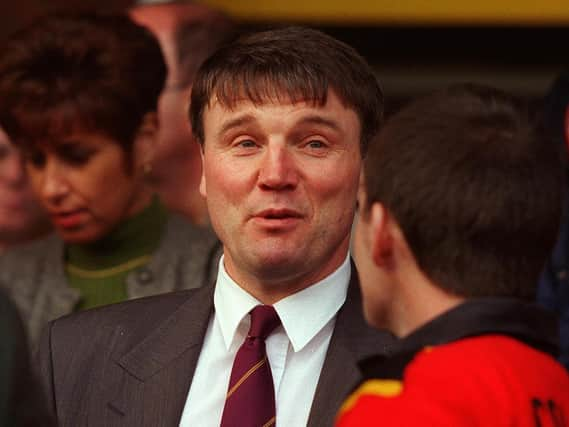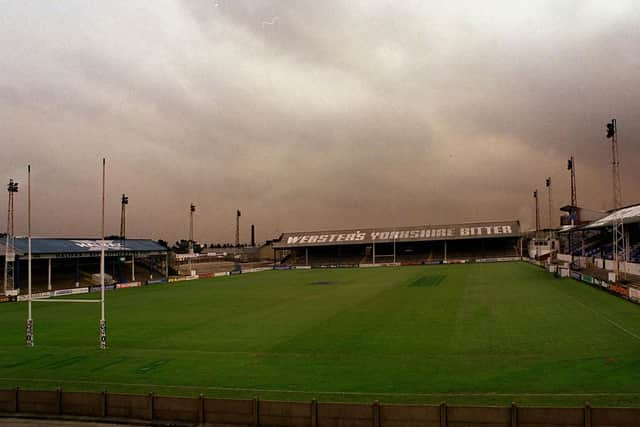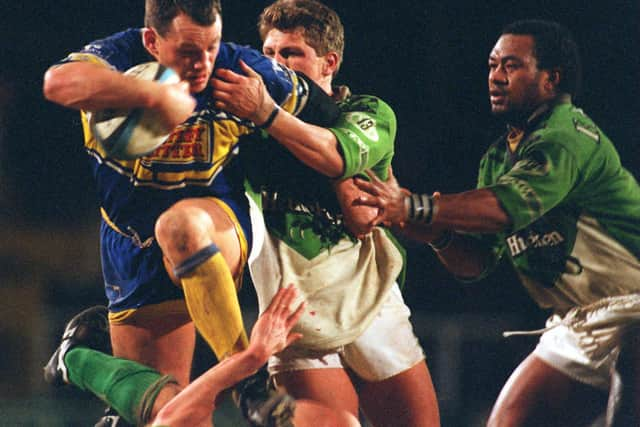Leeds Rhinos boss Hetherington outlines benefits of Super League


Rugby league underwent its biggest transformation 24 years ago when it switched to a summer season and a new 12-club, fully professional elite competition.
Hetherington was involved from the start, as founder and coach of Sheffield Eagles who took part in the first Super League fixture, at Paris St Germain on March 29, 1996.
Advertisement
Hide AdAdvertisement
Hide AdWith the benefit of hindsight, Hetherington feels the transition to the new competition - though handled badly at the time - has brought about a series of crucial benefits, beginning with better facilities for players and spectators.


“Compare the stadia we had at the time [1996] with what we’ve got now,” he said. “We had places like Watersheddings [Oldham], Thrum Hall [Halifax], Wilderspool [Warrington], Central Park [Wigan] and Knowsley Road [St Helens].
“Now we’ve got great facilities like the new stadiums at Wigan, Warrington, St Helens, Hull, Salford and the enhanced Headingley.
“Stadiums have certainly improved and attendances as well.
“The attendances now are significantly bigger than they used to be pre-24 years ago and all that growth came in the first 10 years, really.”


Advertisement
Hide AdAdvertisement
Hide AdHetherington also feels “game-presentation” is better now than before Super League.
He said: “You’ve got the impact of video screens and slicker presentation and marketing has been a real development
“Financial management at clubs is also better. We forget just how poorly clubs were managed in the past.
“That led to a number, including Leeds, teetering on the verge of bankruptcy, purely out of poor financial management by the clubs themselves.
Advertisement
Hide AdAdvertisement
Hide Ad“The salary cap certainly helped in that regard, but I think the clubs are much better at managing their financial affairs and are much more professional in that.”
On the field, Hetherington reckons Super League is “much more competitive” than the league was 25 years ago.
“Salford getting to the Grand Final last year showed that,” he said. “For many years we have what was known as the ‘Big Four’.
“While we’ve still got a situation where only a few teams have won the Super League competition, it is now a much more competitive league and most games now nobody is quite sure of the outcome beforehand, whereas in the past it was a fairly predictable outcome.
Advertisement
Hide AdAdvertisement
Hide Ad“The game has improved. More professional coaching and sports science and strength and conditioning has helped make it a better spectacle, though aspects have been introduced which have had a detrimental effect - grapple and a variety of defensive-minded techniques that have found their way over from Australia.
“Also, independent governance. Twenty four years ago we put in place an independent governing structure.
“Unfortunately we disbanded that two years ago, separating Super League from the RFL, but that served the game well for more than 17 years and we still have independent governance now within the RFL.
“Finally, there’s been some outstanding teams - Bradford Bulls in the early years of Super League, St Helens and Leeds have produced several outstanding teams and so have Castleford.
Advertisement
Hide AdAdvertisement
Hide Ad“You could argue some of these teams are the best-ever teams produced over their club’s history.”
The months before Super League began were marred by arguments over which clubs should be included and fury at proposals to merge certain sides, including Castleford, Wakefield and Featherstone who would have become a single team knows as Calder.
Hetherington admitted the lead up to Super League was “handled extremely badly by the RFL and indeed the clubs”
He said: “The problem was how do you get to a 12-team Super League that needed to include London and Paris.
Advertisement
Hide AdAdvertisement
Hide Ad“In the Rugby League Championship in 1995 there were 16 teams, so how do you reduce that to 10, effectively?
“That’s what created all the rancour and argument and led to the prospect of mergers.
“We were totally under-prepared for it as a game and it was handled poorly and in the end the RFL took the simple decision to say it’s the top 10 teams from the previous season.
“So there was no Widnes, no Hull KR, no Hull, no Featherstone, Salford, Wakefield, Huddersfield or Keighley, who otherwise would have been promoted - and Oldham, Workington, Sheffield, Halifax were in there.
Advertisement
Hide AdAdvertisement
Hide Ad“All the money went to the clubs themselves, effectively - there was no money retained centrally to market the game or invest in it.
“It was a huge transformation for the game, moving to summer and all clubs going full-time, the game found itself with £87m, over five years and clubs like London and Paris came into the competition.
“There was talk of Milan and various exotic cities around Europe so it was an exciting time, full of adventure and uncertainty.”